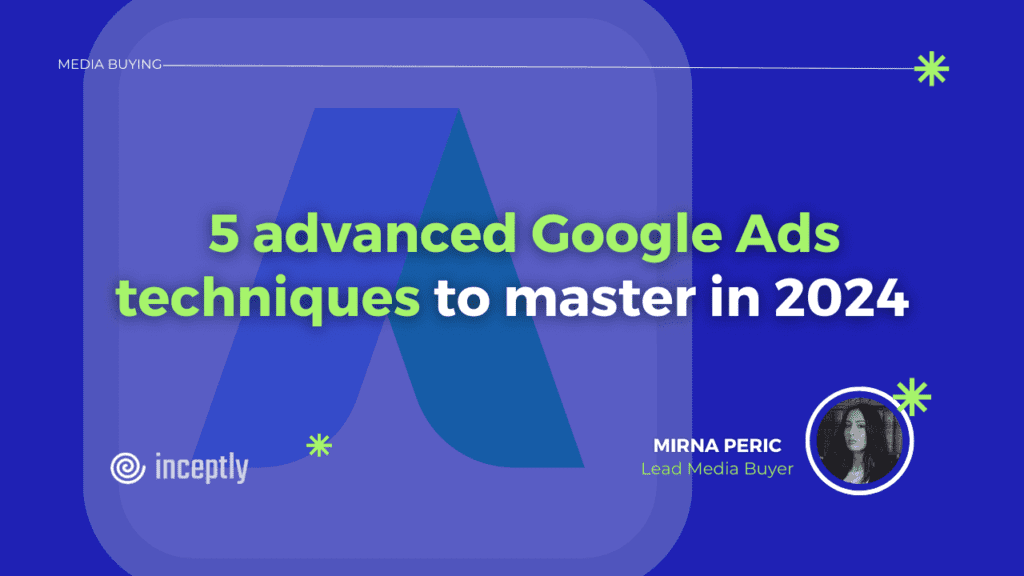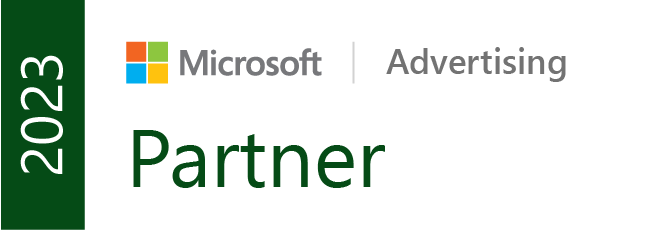
In 2024, mastering Google Ads involves adopting a variety of advanced techniques. These range from simplifying account management to customizing your ads on a large scale and enhancing the effectiveness and efficiency of your campaigns.
Want to brainstorm with our team on new ways to scale your business with YouTube Ads (and other performance video platforms)?
Join us for a free YouTube ad brainstorming session👇
Let’s explore some key strategies.
1. Auto-apply select recommendations
Dealing with persistent “optimization score” notifications can be tedious, especially when they don’t always apply to your campaign. To maintain your Google partnership and support, keeping your optimization scores at 80% or above is essential.
Google provides optimization recommendations in these categories:
Ads and assets
Automated campaigns
Bidding and budgets
Keywords and targeting
Repairs
Measurement
Each category contributes uniquely to your overall optimization score for every account. Critical fixes usually fall under repairs, whereas minor keyword adjustments are typically less urgent. Although irrelevant recommendations can be dismissed, reviewing them before rejecting them is advisable.
To streamline campaign management, consider enabling Google to automatically apply specific recommendations. This feature comes with a detailed “auto-applied recommendations” history and optional email notifications.
Essential auto-optimizations to consider:
- Removing redundant keywords: Eliminate keywords that closely match others within the same ad group and are outperformed by their counterparts.
- Removing non-serving keywords: Get rid of keywords with no impressions over a specified period.
- Updating keyword bids: Adjust bids to align with “top of page” requirements, with the option to set a maximum bid limit.
- Using optimized ad rotation: Prioritize displaying the best-performing ads instead of all ads equally within the same ad group.
Note: Starting June 2024, Google will automatically pause keywords that have been inactive for over 13 months.
How to opt-in for auto-applied recommendations:
Log into your Google Ads account and click on the Campaigns icon.
Navigate to Recommendations.
In the upper right corner, click Auto-apply and select the recommendations you want to automate.
2. Enhance personalization through audiences
Driving personalization in search ads can be achieved by leveraging Google’s audience tools. Previously, marketers depended on keywords and geo-targeting, but now Google offers numerous audience options across search, Performance Max, display, video, and demand generation campaigns. Remember, you can apply audiences with both observation and targeting settings, starting with observation and transitioning to targeting once sufficient data is gathered.
By implementing the following audience types in your campaigns and ad groups, you can better connect with your target audiences:
- Custom audiences
Design custom audiences based on signals like interests, behaviors, browsing history (via URLs), and app usage. This could involve targeting competitor brands, industry-specific websites and apps, and recent Google searches.
For instance, when targeting your competitors’ customers, tailor your ad copy to encourage them to switch to your brand, product, or service, rather than treating them as first-time buyers. Highlight the advantages of your product over the one they currently use. - In-market audiences
In-market audiences are vital for 2024. Curated by Google, these audiences are actively researching products or services and are close to making a purchase decision.
To explore available in-market audiences:- Go to the Audiences tab in your Google Ads campaigns.
- Click “Edit Audience Segments,” then the Browse tab.
- Navigate to In-Market Audiences to see groupings by industry and add relevant ones to your campaigns.
- Use the Search tab to find in-market audience suggestions by entering relevant keywords.
- Since these audiences already recognize the benefits of the product or service you’re advertising, focus your ad copy on highlighting your brand’s unique selling points (USPs).
- Remarketing lists for Search ads (RLSAs)
Though RLSAs (Remarketing lists for Search ads) have seen reduced usage since their introduction in 2013, they still hold value in a well-rounded PPC strategy in 2024. RLSAs allow you to personalize ad copy at scale, particularly for brands with longer sales cycles or more extended customer consideration phases.
For example, if your brand is among several being considered for a high-involvement purchase like a hot tub, RLSAs can help. Once a potential buyer visits your website without converting, your subsequent ads can feature special offers or incentives to persuade them to choose your product.
It’s crucial to maintain separate ad groups or campaigns for RLSAs and to differentiate RLSA audiences from other custom, in-market, or demographic-based audiences.
Always start testing new audiences by adding them as ‘observation’ audiences, then switch to ‘targeting’ once you have reliable data.
3. Leverage your data
Data plays a crucial role in the success of any PPC campaign. Even with top-notch keywords, ad copy, and landing pages, achieving your goals hinges on having accurate data.
A significant data trend for 2024 is optimizing conversion tracking and focusing on key events. As enhanced conversions gain prominence, Google is reducing the confusion around attribution by emphasizing the importance of data.
While it was once best to aim for a single conversion goal across campaigns, in 2024, tracking a mix of conversion events is essential. This includes monitoring activities like PDF downloads and engaged video views leading to lead form submissions or tracking cart abandonments. These signals provide insights into the conversion path and assist Google’s machine learning and automated bidding strategies.
Conversion tracking is not only vital for success, but your conversion settings are also critical. Review your Google Ads account’s conversion list to identify primary and secondary or account default conversion goals. Having multiple primary conversion goals can complicate Google’s ability to auto-optimize conversion-based bidding strategies. Opt for one or two primary conversion goals, setting the rest as secondary.
4. Collaborate beyond Google ads
A top-performing PPC manager understands how PPC integrates into the broader marketing funnel and mix. Traditionally viewed as a bottom-of-funnel tactic, PPC’s role is evolving.
In 2024, rethink Google Ads beyond a bottom-of-funnel (BOF) strategy. With the appropriate strategy, campaign type, and goal tracking, Google Ads can yield upper, mid, and lower-funnel results.
Additionally, Google Ads supports various cross-channel initiatives, such as:
- Enhancing brand awareness and consideration: Use YouTube and other video platforms.
- Capturing demand from social media: Target activity from platforms like Meta, TikTok, or Snapchat.
- Leveraging traditional media: Reach audiences influenced by offline channels like TV, billboards, or print.
- Remarketing to website traffic: Convert visitors from all sources.
- Boosting loyalty and cross-selling: Utilize current customer data for loyalty and upselling opportunities.
This shift underscores the importance of data-driven attribution in 2024. Google Ads influences multiple customer touchpoints, rendering last-click attribution insufficient for measuring campaign success.
5. Refine your exclusions
To maximize efficiency, exclusions are essential in your account, especially with the growing trend toward automated campaigns and management.
Exclusions are vital for both search and Performance Max campaigns, contributing to a streamlined campaign structure. Consider these common exclusions:
- Negative keywords: “Free,” “Jobs,” “Download,” “Cheap,” “How to,” “YouTube,” “Amazon,” “Facebook,” “Sample,” “Guide,” “Logo,” “Resource,” “DIY.”
- Audience exclusions: Exclude remarketing and previously converted audiences.
- Brand exclusions: Omit specific brands as needed.
- Geotargeting exclusions: Define areas to exclude.
- Placement exclusions: Prevent ads from appearing on undesirable sites or content.
Without these exclusions, your ads may reach irrelevant audiences, appear alongside questionable content, or trigger unrelated search terms.
In the competitive landscape of PPC advertising in 2024, it’s essential to master the fundamentals of a robust Google Ads account: precise targeting, personalized messaging, data-driven insights, streamlined campaign management, and strategic exclusions. By implementing these practices, you can effectively navigate the complexities of advanced account management and drive success in your campaigns.
Want to brainstorm with our team on new ways to scale your business with YouTube Ads (and other performance video platforms)?
Join us for a free YouTube ad brainstorming session👇
Want more content like this?
Don’t miss out on the latest news and updates from the world of Direct Response advertising! Subscribe to our newsletter today 👇

Mirna Peric, Lead Media Buyer
Mirna is a top-notch Media Buyer with years of experience and millions of dollars in revenue-generating ad spend to prove it. Her insatiable curiosity combined with a strategic mindset helps her stay ahead of the game when scaling our clients' offers.
Like this post? Let's continue the conversation!
Get in touch with us by shooting us a quick email or tagging us on LinkedIn or Instagram, and sharing your thoughts. Your feedback helps us keep our blog relevant and interesting.
Get Our Newsletter
Need Help?
Get in touch with us for an insightful evaluation of your ads + actionable tips to help amp up your direct response revenue



